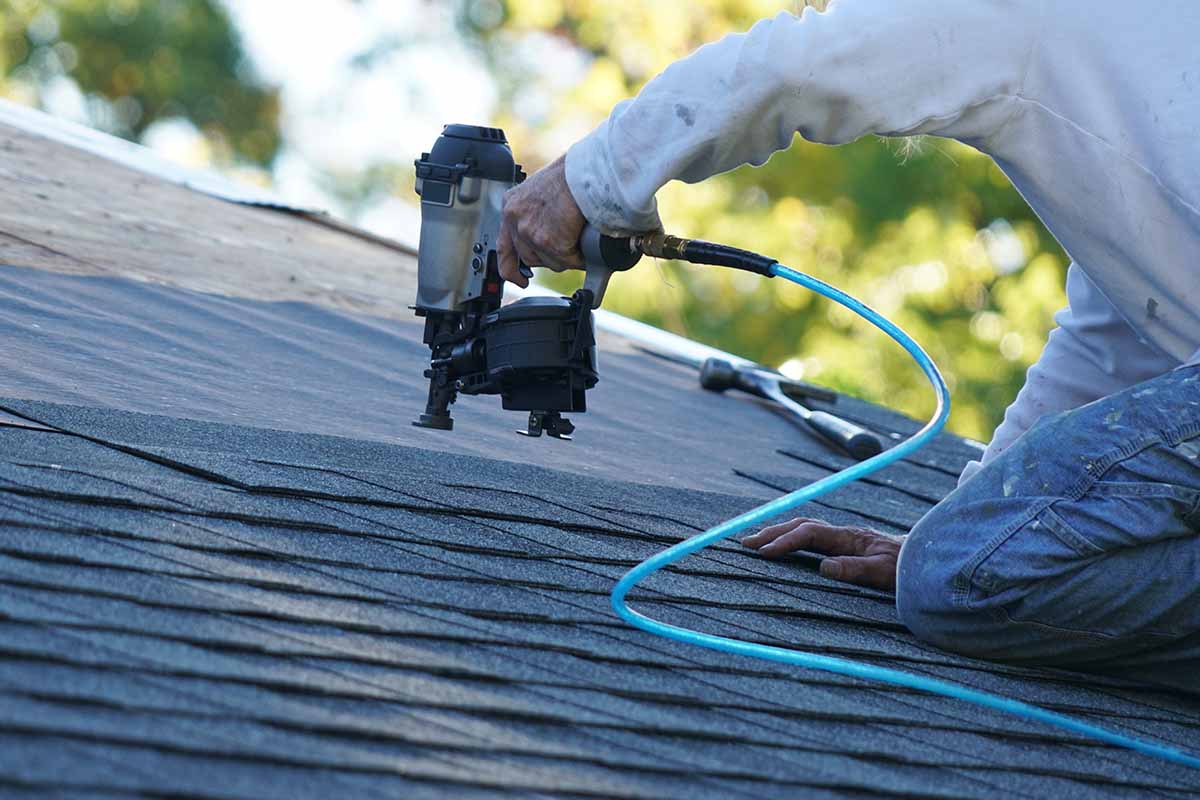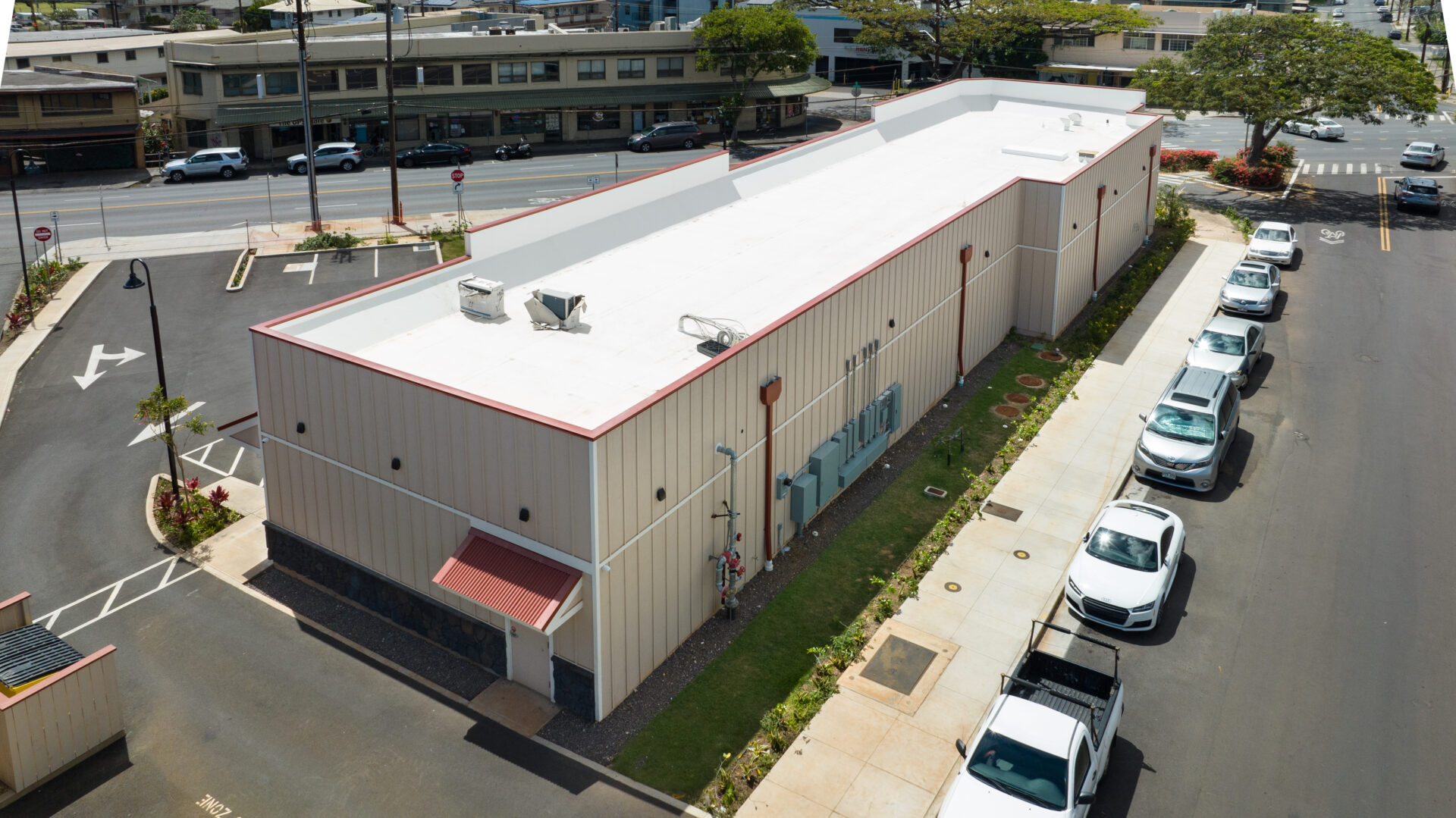Discover Common Roof Covering Troubles and Exactly How to Address Them Efficiently
When it involves your roofing, finding troubles early can save you money and time. You could discover water stains on your ceiling or split tiles throughout your routine checks. Ignoring these indicators can lead to larger problems down the line. Understanding just how to determine and attend to these common roof covering problems is essential for maintaining your home's stability. What certain steps should you take to ensure your roof remains in leading condition?
Recognizing Roofing Leaks and Their Causes

Following, examine your roof covering from the exterior. Look for missing or fractured ceramic tiles, rusted flashing, or harmed rain gutters. Take note of areas around smokeshafts, vents, and skylights, as these prevail leakage resources. If you identify any of these problems, it's important to resolve them immediately.
During heavy rainfall, observe your roofing system for any merging water or drips. This can expose leakages that could not show up during completely dry conditions. By remaining watchful and routinely inspecting your roofing, you can capture leaks early and shield your home from additional damages.
Handling Missing Out On or Harmed Tiles
When you notice missing or harmed tiles, it's necessary to act rapidly to stop further problems. You'll wish to determine the degree of the damage, fix any kind of missing roof shingles, and take into consideration preventative maintenance ideas to maintain your roofing system in top form. Taking these actions can save you money and time in the future.
Recognizing Shingle Damages
Although roof shingles are developed to stand up to the components, they can still endure damage gradually, bring about possible leakages and expensive fixings. To identify shingle damage, begin by inspecting your roof for missing, cracked, or curled roof shingles. Seek indicators of staining or granule loss, which can show damage. Focus on any type of areas where shingles are raising or buckling, as these can produce vulnerabilities. It's also wise to inspect for water discolorations or mold and mildew on your ceilings and walls, as these might signal leaks originating from damaged tiles. Frequently monitoring your roof covering, particularly after serious weather, can help you catch issues early and maintain the honesty of your home.
Fixing Missing Out On Shingles
After detecting roof shingles damages, the following action is dealing with any missing or damaged roof shingles without delay to avoid further issues. Begin by checking the damaged area and figuring out the number of shingles need substitute. If you can, climb up onto your roof covering securely, putting on suitable gear. Eliminate any type of broken roof shingles carefully using a pry bar. When you have actually cleared the area, slide in the new shingles, guaranteeing they straighten with the existing ones. Safeguard them with roof nails and apply roofing adhesive for added stability. Don't forget to seal the edges to protect against water seepage. If you're awkward with the fixing, it's a good idea to call a professional. Doing something about it swiftly will help maintain your roof's honesty and expand its life expectancy.
Preventive Maintenance Tips
How can you maintain your roof covering in top form and prevent shingles from going missing or getting harmed? Check your roofing at least twice a year and after serious climate (roofers oahu).
Keep gutters tidy and without debris to assure correct water flow and protect against shingle damage. Trim looming branches to decrease the threat of them scratching against your roof during tornados.
Think about using a protective sealer to extend your shingles' lifespan. Ultimately, if you see any type of issues, resolve them quickly to stay clear of pricey repair work later. Taking these preventive actions can conserve you time and money while assuring your roof covering stays sturdy and dependable.
Comprehending Roofing Air Flow Issues
Proper roof ventilation is important for maintaining the durability and effectiveness of your roof, as it assists control temperature and moisture degrees in your attic room. Without ample ventilation, you may encounter problems like excessive warmth buildup, resulting in early tile damage, or increased moisture that can create mold and mildew growth and wood rot.
To evaluate your roofing system ventilation, look for indicators of getting too hot, such as deformed tiles or a warm attic. Seek obstructed vents, which can restrict air movement and trap warmth. You need to guarantee your intake and exhaust vents are balanced, permitting appropriate air exchange.
If you believe air flow issues, think about installing added vents or updating existing ones. Ridge vents, soffit vents, and gable vents can all boost air flow. Dealing with these issues quickly can secure your roofing system and conserve you from expensive repairs down the line. Remain positive in maintaining your roofing's ventilation to shield your home.
Addressing Roof Covering Moss and Algae Growth
While you might appreciate the natural appearance of moss and algae on your roofing system, these microorganisms can lead to substantial troubles if left uncontrolled. Make use of a soft-bristle brush to delicately scrub away the moss and algae, being cautious not to damage your shingles.
Following, take into consideration applying a specialized roofing system cleaner or a blend of water and bleach to kill staying spores. Wash thoroughly to avoid any type of chemical damage. Additionally, set up zinc or copper strips along the ridge of your roofing. As rainfall washes over these steels, it creates a safety obstacle versus future development. Regular inspections and maintenance will help protect against moss and algae from returning, guaranteeing your roof covering continues to be healthy for many years to find.
Fixing Storm Damages and Wind Concerns
After a tornado, it's crucial to examine your roofing system for damage triggered by high winds and heavy rain. Start by examining for missing or damaged roof shingles, as these prevail casualties. If you notice any kind of, it is necessary to change them immediately to stop leaks. Next Recommended Reading off, evaluate the flashing around smokeshafts and vents; harmed flashing can bring about water infiltration.
Look for any kind of sagging locations, which might suggest water accumulation or architectural issues. If you locate any kind of particles, like branches or leaves, remove them carefully to stay clear of additional damage. If your gutters are obstructed, clear them to guarantee correct drain.

For tiny repair work, you could handle it on your own, however do not hesitate to call a professional for substantial damage. Bear in mind, acting quickly can save you from bigger troubles down the line, so take that evaluation seriously and resolve any type of problems as quickly as feasible.
Recognizing Indications of Architectural Damages
Just how can you tell if your roof covering is struggling with structural damage? Begin by looking for visible sagging or dips in your roofline. These indications show that the underlying framework might be jeopardized. Next off, look for splits or voids in the walls or ceiling, as these can indicate moving or resolving as a result of roof issues. Take note of leaks or water stains, especially in areas where the roofing system fulfills wall surfaces. If you observe missing out on or broken roof shingles, it's important to address them rapidly, as they can expose your roofing system to further damage. Inspect your attic for any type of indicators of daytime glimpsing with, which could mean your roofing's stability is at risk. Pay attention for unusual creaking or standing out noises, as they may suggest architectural tension. If you notice any one of these indications, it's time to seek advice from a roof covering expert for a complete evaluation.
Regular Maintenance Tips for Durability

Regular Evaluations Significance
Given that a roofing is your home's first line of protection versus the aspects, normal assessments are vital for keeping its integrity. You must inspect your roofing system at the very least twice a year, ideally in springtime and fall, to catch prospective issues early. Keeping up with these examinations can protect against expensive repairs down the line and extend your roofing's lifespan, ensuring your home stays secure and audio for years to come.
Proper Gutter Upkeep
Routine roof covering evaluations normally bring about the importance of appropriate seamless gutter maintenance. Clean your rain gutters at least twice a year to stop obstructions from fallen leaves, dirt, and debris. If you reside in a tree-heavy area, take into consideration examining them more often. Utilize a strong ladder and put on handwear covers while getting rid of the buildup. Likewise, evaluate your seamless gutters for leakages or corrosion; they can create water damage to your roofing system and home. See to it downspouts straight water far from your foundation to prevent flooding. Setting up gutter guards can reduce debris build-up and minimize maintenance time. Check for appropriate slope; gutters need to incline toward the downspouts to assure excellent water drainage. By complying with these suggestions, you'll extend your seamless gutters' life-span and secure your roofing.
Frequently Asked Inquiries
Exactly How Can I Choose the Right Roof Covering Product for My Home?
To select the ideal roofing product for your home, consider climate, longevity, and aesthetics. Study options like asphalt tiles, metal, or floor tile. Believe about maintenance demands and budget to discover what fits you finest.
What Are the Indicators I Need a Roof Covering Replacement Rather Than Repair Work?
If you see extensive leakages, drooping, or missing out on shingles, you might require a roof covering replacement. If your roofing system's see nearing its life expectancy or has significant damage, it's time to ponder a complete substitute rather of simply fixings.
How Commonly Should I Set Up Professional Roofing System Examinations?
You ought to schedule expert roofing assessments at least yearly, ideally in spring or autumn. This assists capture possible concerns early, guaranteeing your roof remains in good condition and extending its lifespan.
Can I Mount a New Roof Over My Old One?
You can mount a brand-new roof over your old one, however it's vital to check regional structure codes and guarantee the existing roof covering's condition is sound. This approach can conserve time and cash, yet consider potential complications.
What Is the Average Lifespan of Various Roof Covering Materials?
The average lifespan differs by product: asphalt shingles last 15-30 years, metal roofing systems can last 40-70 years, while tile or slate roofs might surpass 50 years. Select carefully based on your environment and budget plan.
Conclusion
By remaining alert and resolving see this website common roof covering issues immediately, you can protect your home and extend your roof's life expectancy. With a little routine maintenance, you'll not only guard your financial investment yet likewise delight in tranquility of mind understanding your roofing is in leading form.